Abstract
There is evidence that predisposition to cancer has a genetic component. Genetic models have suggested that there is at least one highly penetrant gene predisposing to this disease. The oncogene MXI1 on chromosome band 10q24-25 is mutated in a proportion of prostate tumours and loss of heterozygosity occurs at this site, suggesting the location of a tumour suppressor in this region. To investigate the possibility that MXI1 may be involved in inherited susceptibility to prostate cancer, we have sequenced the HLH and ZIP regions of the gene in 38 families with either three cases of prostate cancer or two affected siblings both diagnosed below the age of 67 years. These are the areas within which mutations have been described in some sporadic prostate cancers. No mutations were found in these two important coding regions and we therefore conclude that MXI1 does not make a major contribution to prostate cancer susceptibility.
Full text
PDF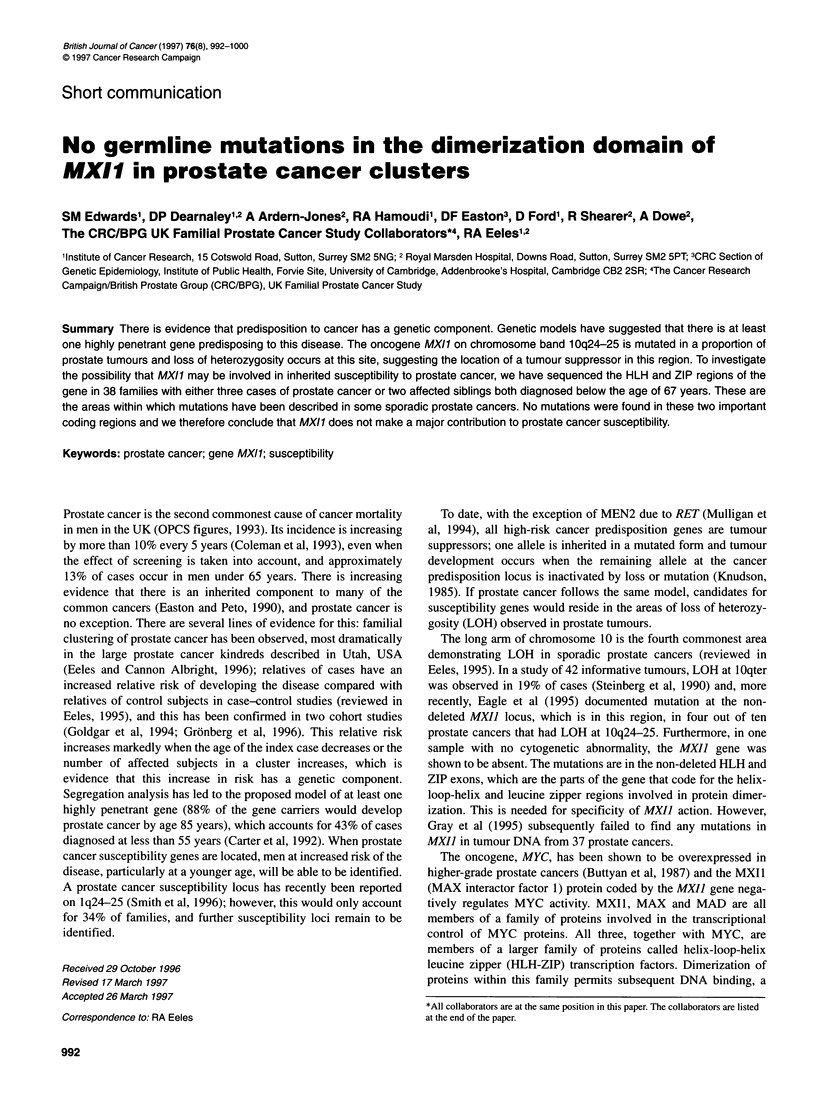
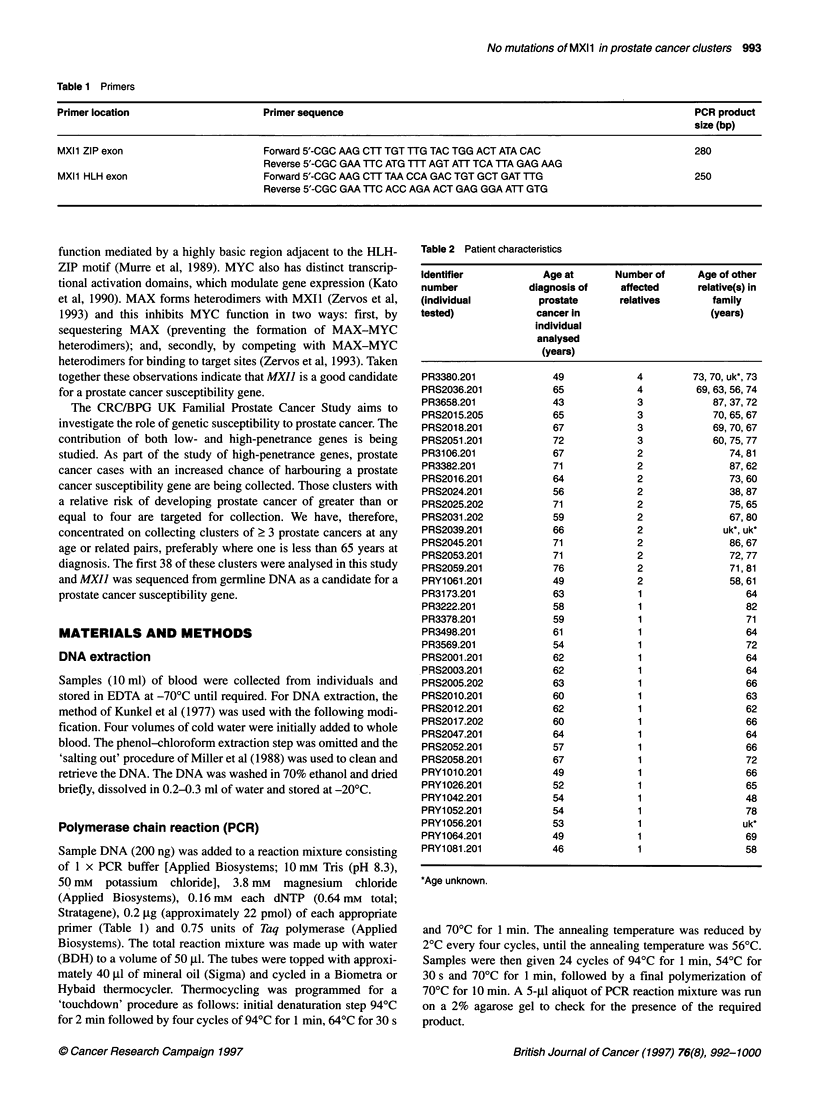
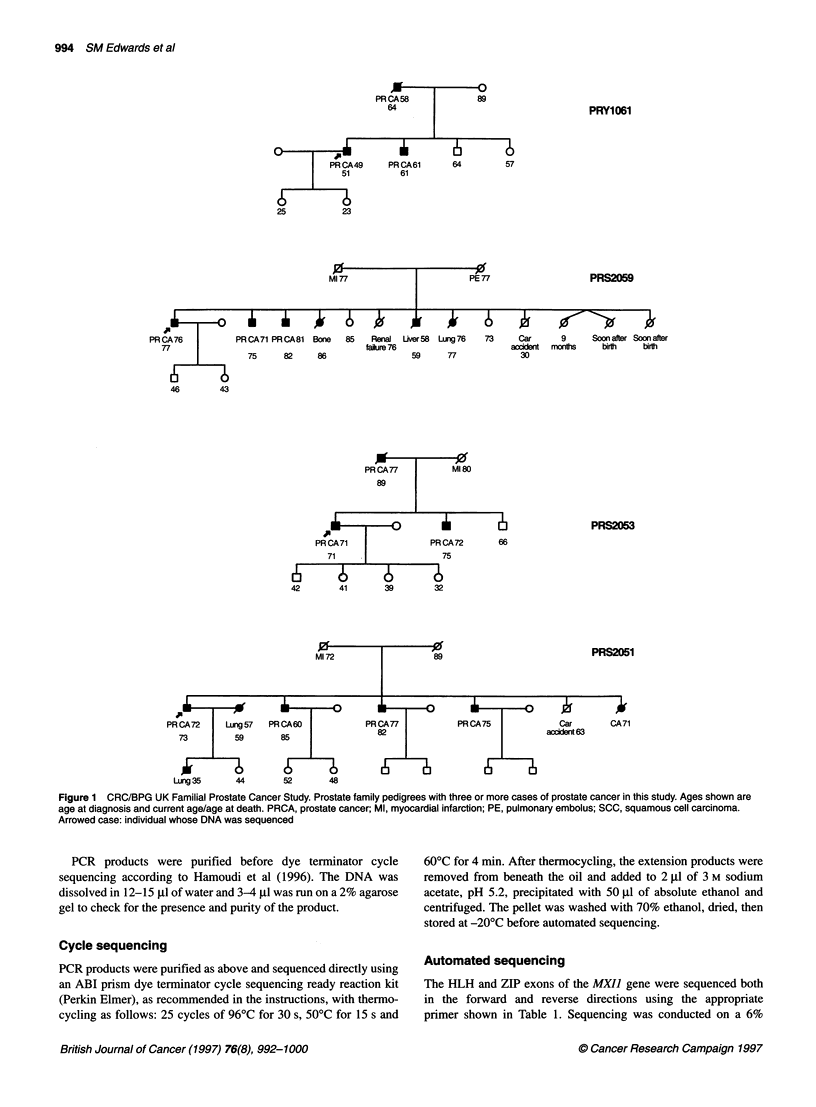
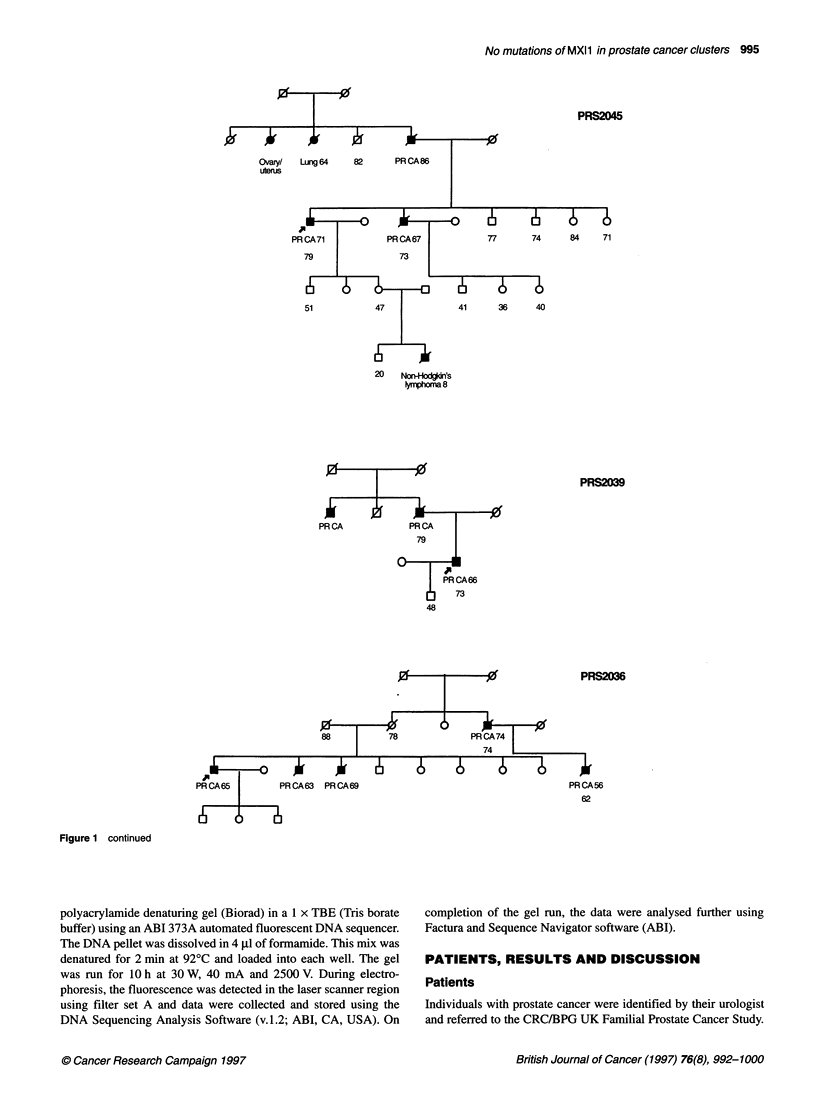
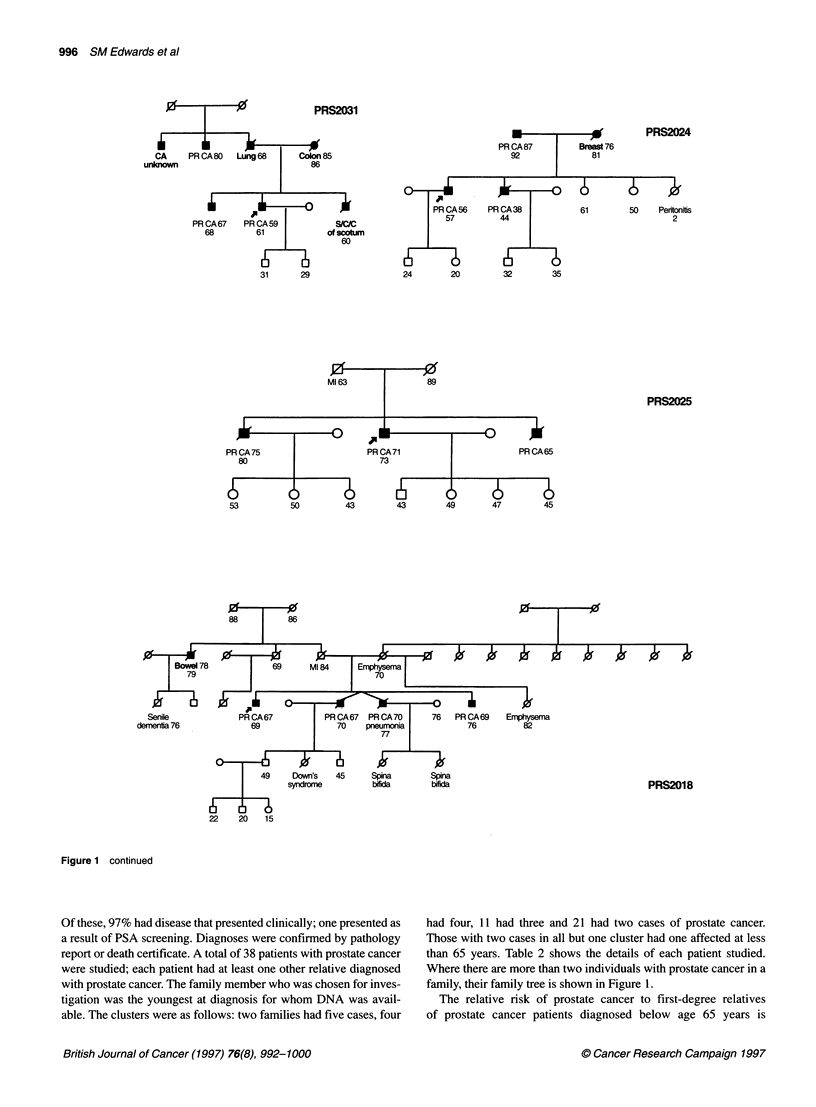
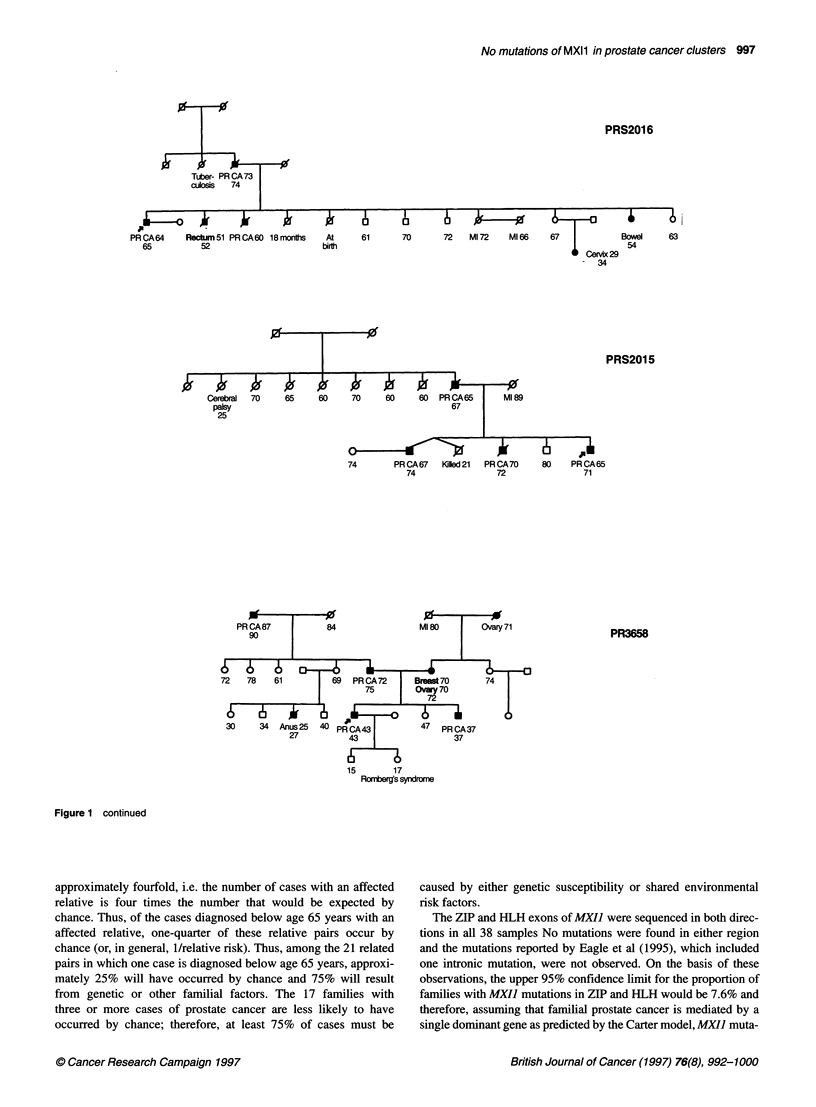
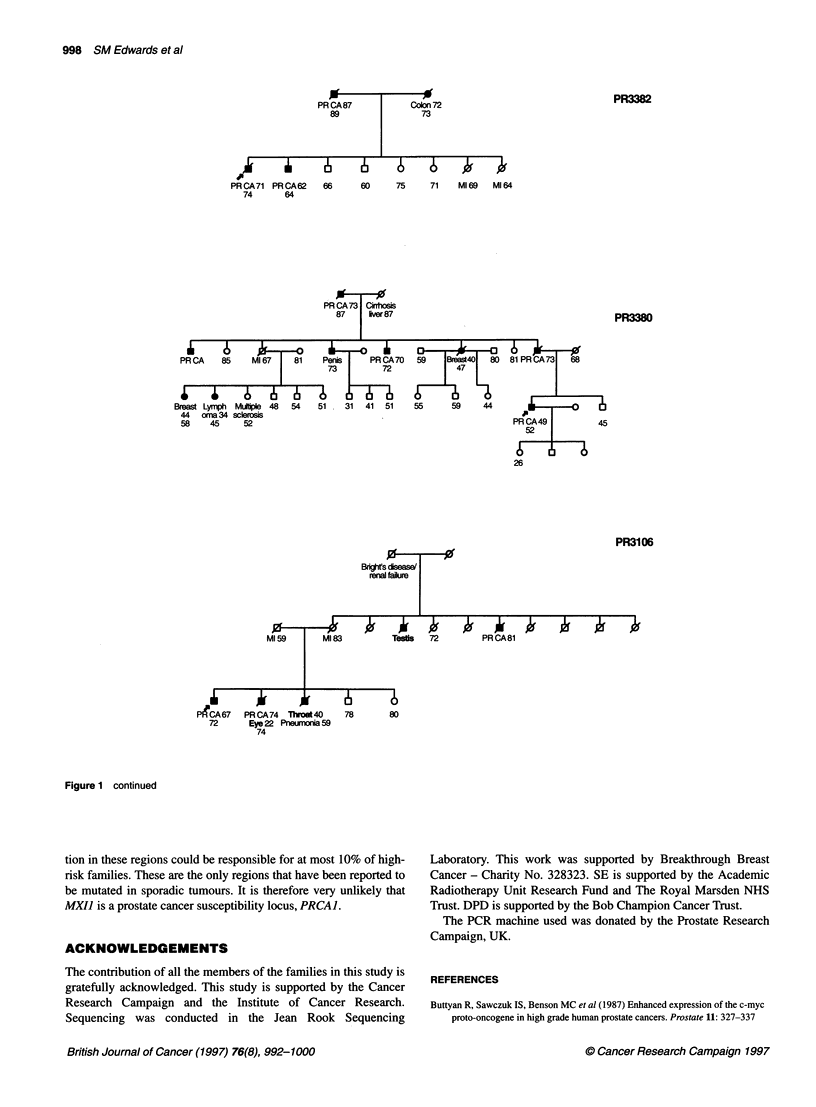
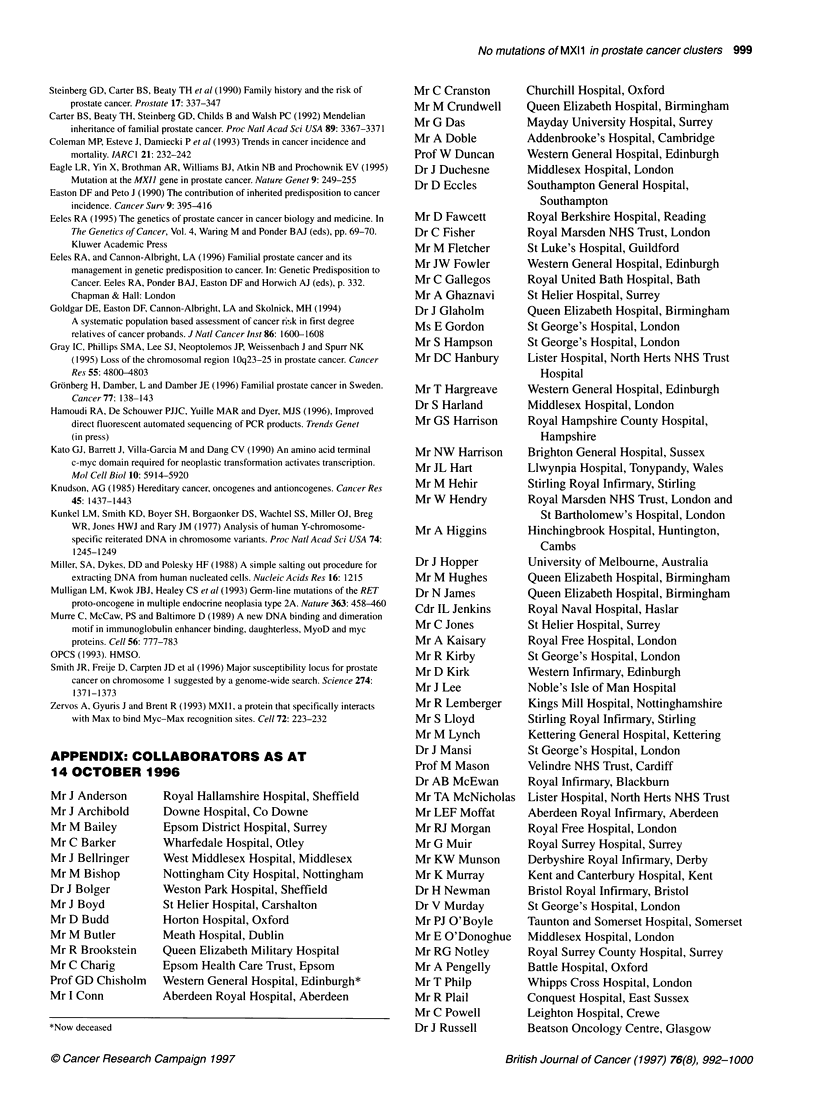
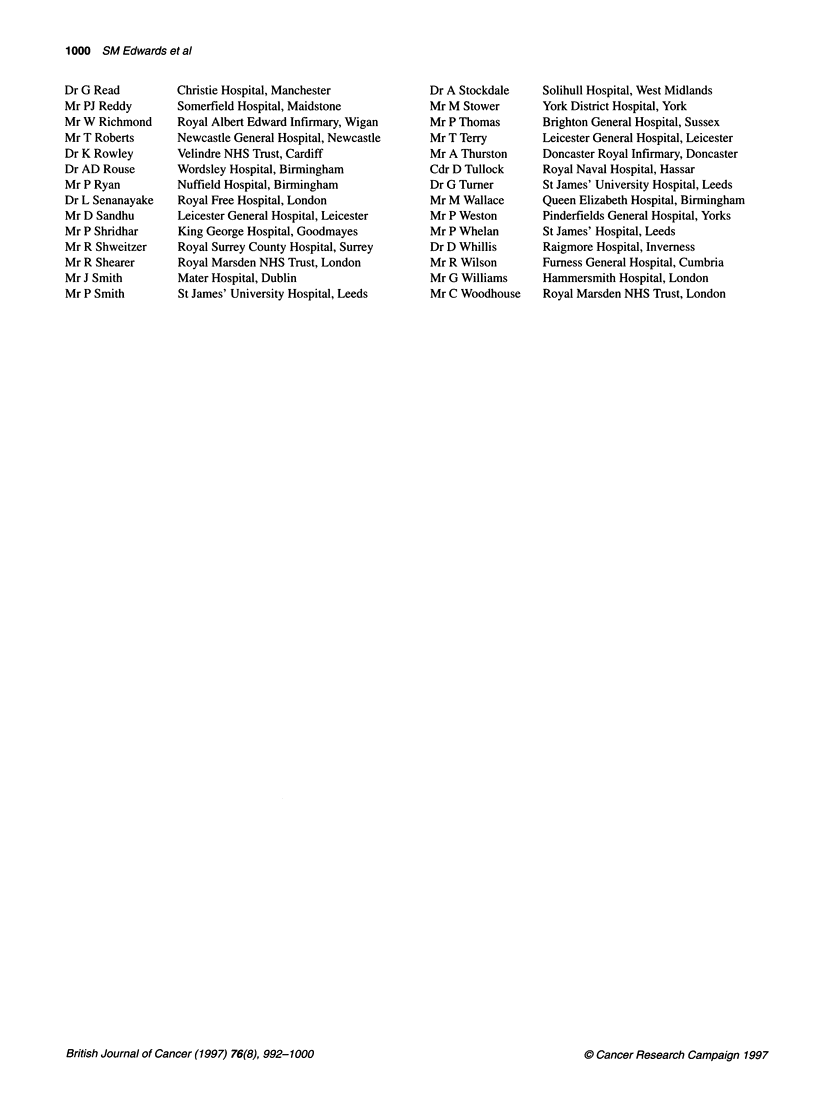
Selected References
These references are in PubMed. This may not be the complete list of references from this article.
- Buttyan R., Sawczuk I. S., Benson M. C., Siegal J. D., Olsson C. A. Enhanced expression of the c-myc protooncogene in high-grade human prostate cancers. Prostate. 1987;11(4):327–337. doi: 10.1002/pros.2990110405. [DOI] [PubMed] [Google Scholar]
- Carter B. S., Beaty T. H., Steinberg G. D., Childs B., Walsh P. C. Mendelian inheritance of familial prostate cancer. Proc Natl Acad Sci U S A. 1992 Apr 15;89(8):3367–3371. doi: 10.1073/pnas.89.8.3367. [DOI] [PMC free article] [PubMed] [Google Scholar]
- Eagle L. R., Yin X., Brothman A. R., Williams B. J., Atkin N. B., Prochownik E. V. Mutation of the MXI1 gene in prostate cancer. Nat Genet. 1995 Mar;9(3):249–255. doi: 10.1038/ng0395-249. [DOI] [PubMed] [Google Scholar]
- Easton D., Peto J. The contribution of inherited predisposition to cancer incidence. Cancer Surv. 1990;9(3):395–416. [PubMed] [Google Scholar]
- Goldgar D. E., Easton D. F., Cannon-Albright L. A., Skolnick M. H. Systematic population-based assessment of cancer risk in first-degree relatives of cancer probands. J Natl Cancer Inst. 1994 Nov 2;86(21):1600–1608. doi: 10.1093/jnci/86.21.1600. [DOI] [PubMed] [Google Scholar]
- Gray I. C., Phillips S. M., Lee S. J., Neoptolemos J. P., Weissenbach J., Spurr N. K. Loss of the chromosomal region 10q23-25 in prostate cancer. Cancer Res. 1995 Nov 1;55(21):4800–4803. [PubMed] [Google Scholar]
- Grönberg H., Damber L., Damber J. E. Familial prostate cancer in Sweden. A nationwide register cohort study. Cancer. 1996 Jan 1;77(1):138–143. doi: 10.1002/(SICI)1097-0142(19960101)77:1<138::AID-CNCR23>3.0.CO;2-5. [DOI] [PubMed] [Google Scholar]
- Kato G. J., Barrett J., Villa-Garcia M., Dang C. V. An amino-terminal c-myc domain required for neoplastic transformation activates transcription. Mol Cell Biol. 1990 Nov;10(11):5914–5920. doi: 10.1128/mcb.10.11.5914. [DOI] [PMC free article] [PubMed] [Google Scholar]
- Knudson A. G., Jr Hereditary cancer, oncogenes, and antioncogenes. Cancer Res. 1985 Apr;45(4):1437–1443. [PubMed] [Google Scholar]
- Kunkel L. M., Smith K. D., Boyer S. H., Borgaonkar D. S., Wachtel S. S., Miller O. J., Breg W. R., Jones H. W., Jr, Rary J. M. Analysis of human Y-chromosome-specific reiterated DNA in chromosome variants. Proc Natl Acad Sci U S A. 1977 Mar;74(3):1245–1249. doi: 10.1073/pnas.74.3.1245. [DOI] [PMC free article] [PubMed] [Google Scholar]
- Miller S. A., Dykes D. D., Polesky H. F. A simple salting out procedure for extracting DNA from human nucleated cells. Nucleic Acids Res. 1988 Feb 11;16(3):1215–1215. doi: 10.1093/nar/16.3.1215. [DOI] [PMC free article] [PubMed] [Google Scholar]
- Mulligan L. M., Kwok J. B., Healey C. S., Elsdon M. J., Eng C., Gardner E., Love D. R., Mole S. E., Moore J. K., Papi L. Germ-line mutations of the RET proto-oncogene in multiple endocrine neoplasia type 2A. Nature. 1993 Jun 3;363(6428):458–460. doi: 10.1038/363458a0. [DOI] [PubMed] [Google Scholar]
- Murre C., McCaw P. S., Baltimore D. A new DNA binding and dimerization motif in immunoglobulin enhancer binding, daughterless, MyoD, and myc proteins. Cell. 1989 Mar 10;56(5):777–783. doi: 10.1016/0092-8674(89)90682-x. [DOI] [PubMed] [Google Scholar]
- Smith J. R., Freije D., Carpten J. D., Grönberg H., Xu J., Isaacs S. D., Brownstein M. J., Bova G. S., Guo H., Bujnovszky P. Major susceptibility locus for prostate cancer on chromosome 1 suggested by a genome-wide search. Science. 1996 Nov 22;274(5291):1371–1374. doi: 10.1126/science.274.5291.1371. [DOI] [PubMed] [Google Scholar]
- Steinberg G. D., Carter B. S., Beaty T. H., Childs B., Walsh P. C. Family history and the risk of prostate cancer. Prostate. 1990;17(4):337–347. doi: 10.1002/pros.2990170409. [DOI] [PubMed] [Google Scholar]
- Zervos A. S., Gyuris J., Brent R. Mxi1, a protein that specifically interacts with Max to bind Myc-Max recognition sites. Cell. 1993 Jan 29;72(2):223–232. doi: 10.1016/0092-8674(93)90662-a. [DOI] [PubMed] [Google Scholar]


